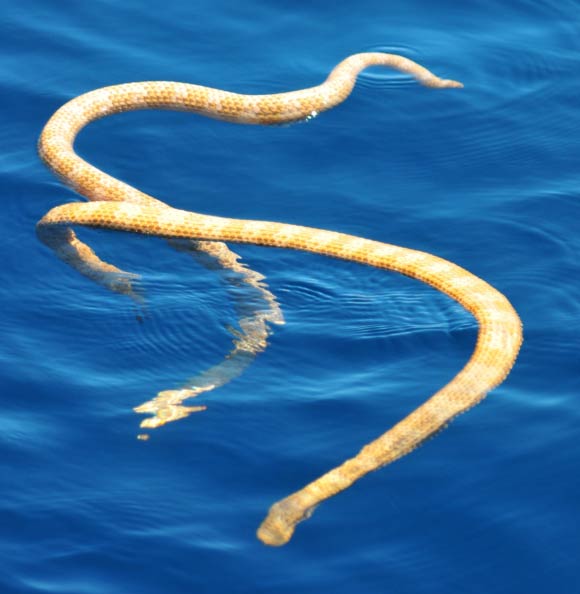A team of scientists from James Cook University and Curtin University, both in Australia, has rediscovered two Australian endemic sea snake species, leaf-scaled (Aipysurus foliosquama) and short-nosed (Aipysurus apraefrontalis) sea snakes, whose existence had not been documented since the 2000s.

Short-nosed sea snakes (Aipysurus apraefrontalis). Image credit: Grant Griffin / WA Parks and Wildlife Service.
Australia is a biodiversity hotspot for true sea snakes (subfamily Hydrophiinae), which are predatory, live bearing, have an entirely marine life cycle and represent the most biodiverse extant group of marine reptiles.
There are nearly 35 sea snake species native to Australia, but two endemics – the leaf-scaled sea snake and the short-nosed sea snake – are among the rarest.
In 2009, both species were listed as Critically Endangered under IUCN Red List criteria and Australia’s Threatened Species Legislation due to their restricted geographic ranges being less than 10 sq. km.
They were thought to be restricted to Ashmore and Hibernia Reefs – offshore coral reefs in the Timor Sea, from where they disappeared between 1998 and 2002.
A paper published last week in the journal Biological Conservation presents the first records of live animals of both species since their listing as Critically Endangered.
According to Blanche D’Anastasi, lead author and scientist at James Cook University, the rediscovery of the short-nosed sea snake occurred on Ningaloo Reef, a 160 mile (260 km) fringing reef off Western Australia’s mid north coast.
“We were blown away, these potentially extinct snakes were there in plain sight, living on one of Australia’s natural icons, Ningaloo Reef,” D’Anastasi said.
D’Anastasi and her colleagues also made another unexpected discovery, uncovering a significant population of the leaf scaled sea snake in the lush seagrass beds of Shark Bay.
The discovery was made 1,057 miles (1,700 km) south of the snakes only known habitat on Ashmore Reef.
“We had thought that this species of sea snake was only found on tropical coral reefs,” D’Anastasi said.
“Finding them in seagrass beds at Shark Bay was a real surprise.”
_____
B.R. D’Anastasi et al. 2016. New range and habitat records for threatened Australian sea snakes raise challenges for conservation. Biological Conservation, vol. 194, pp. 66-70; doi: 10.1016/j.biocon.2015.11.032







